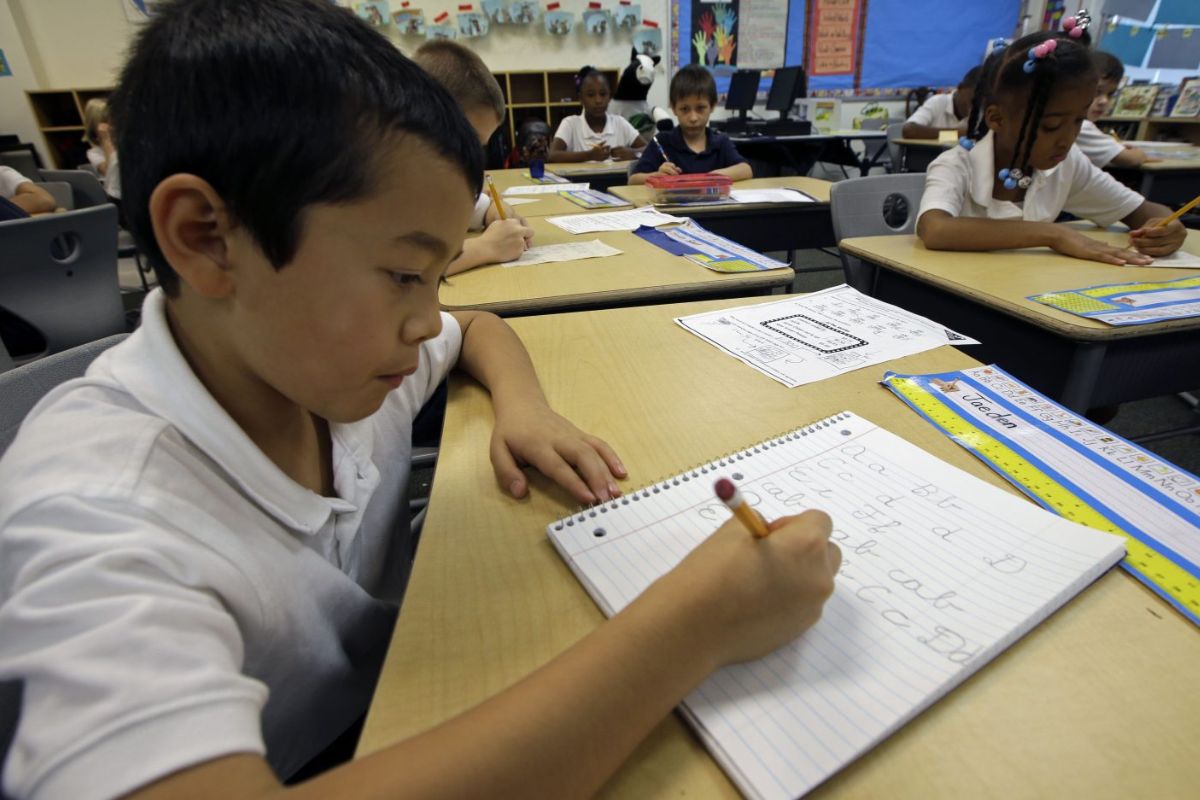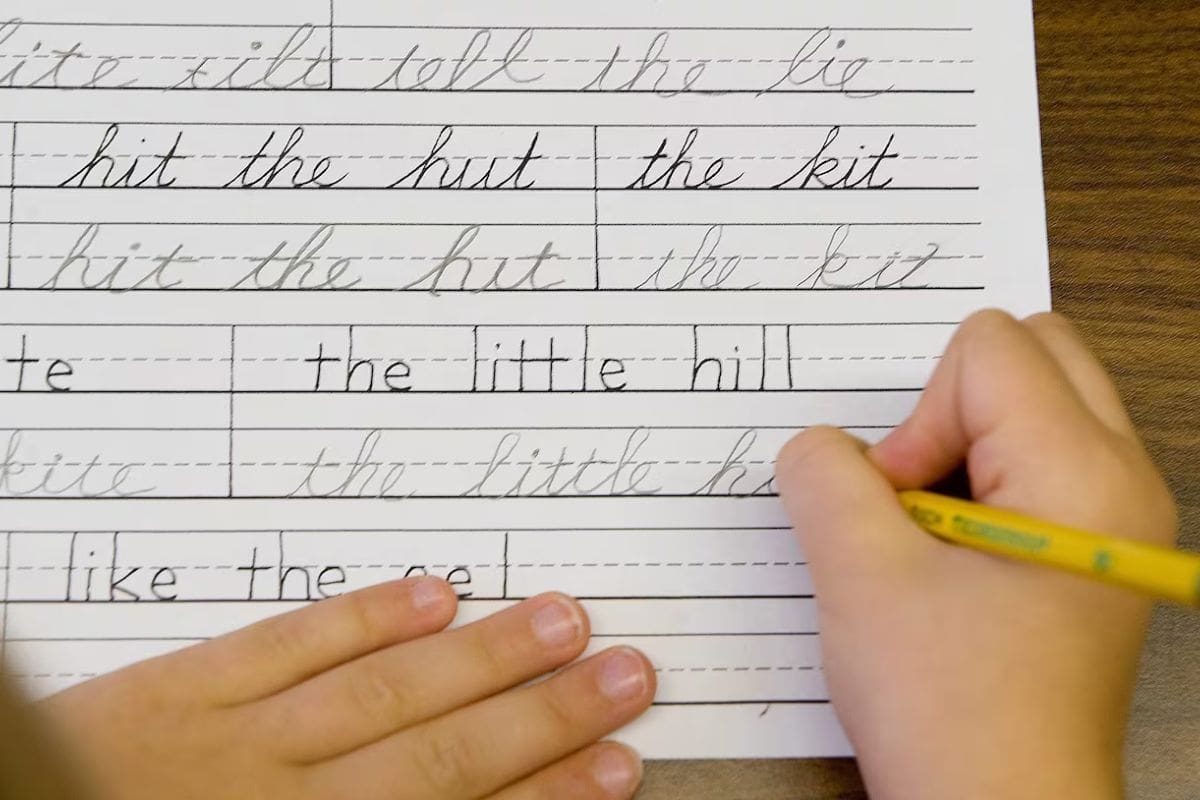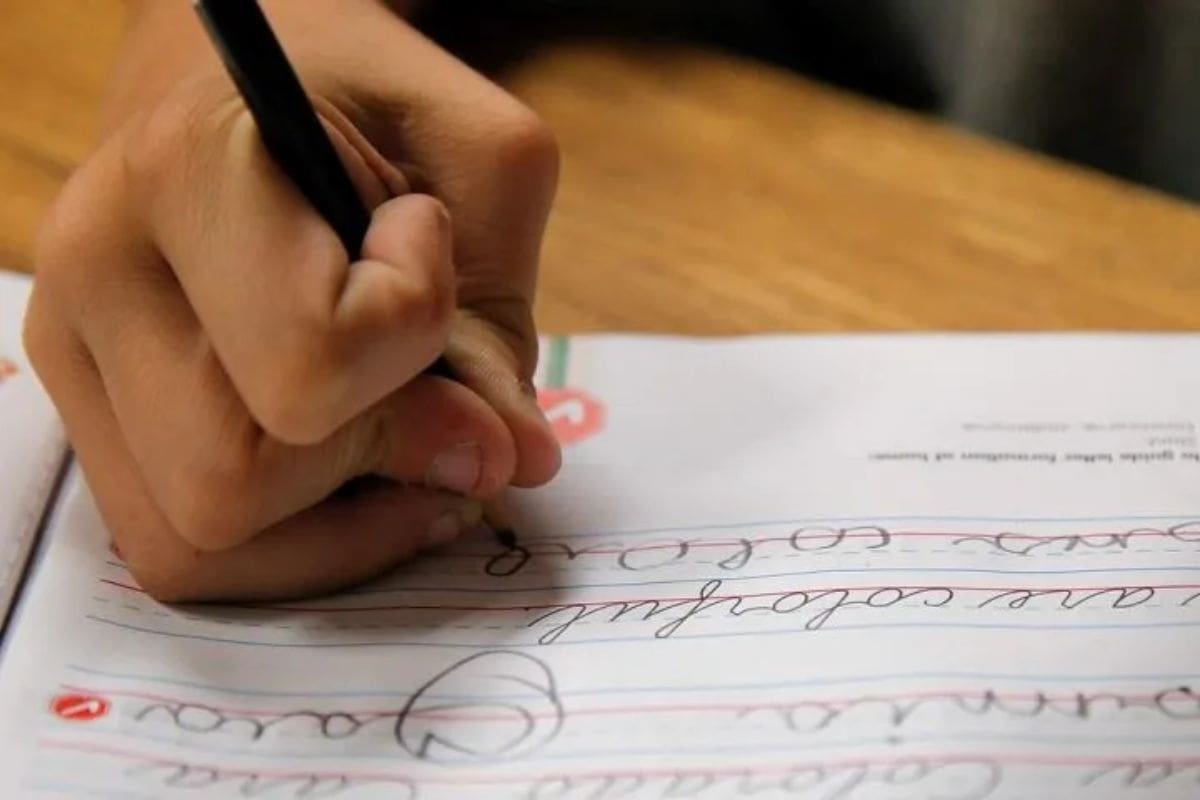Cursive Making a Comeback: The resurgence of cursive handwriting is quietly weaving its way back into society, sparking conversations and curiosity among educators, policymakers, and the public alike.
With a notable shift in California’s legislative landscape mandating the teaching of cursive in schools, a new era of appreciation for this elegant script seems to be unfolding.
From the classroom to neurological studies, the implications of this revival are vast and multifaceted.
As we witness this intriguing revival, one cannot help but ponder the broader implications and potential benefits that may accompany this return to a timeless art form.
Legislative Shift: Cursive Returns with a New California Law
In response to the changing landscape of education and technological advancements, a significant legislative shift has occurred in California, reinstating cursive writing through a new state law. This development marks a pivotal moment in the ongoing dialogue surrounding the importance of traditional handwriting skills in a digital age. Assembly member Sharon Quirk-Silva, drawing from her experience as a former elementary school teacher, championed this initiative, inspired by a conversation with former California governor Jerry Brown, who endorsed the revival of cursive writing.
The reintroduction of cursive writing in California signifies a deliberate effort to preserve a fundamental aspect of communication and cognitive development. By requiring handwriting lessons, the state acknowledges the enduring value of cursive proficiency in fostering fine motor skills, enhancing memory retention, and promoting creativity. This legislative action reflects a commitment to equipping students with a comprehensive set of tools essential for their academic and personal growth.
As California leads the way in embracing cursive education, the broader implications of this decision reverberate across the educational landscape, sparking a renewed interest in the timeless art of penmanship.
Nationwide Trend: Cursive Education Across the United States
Evidencing a growing recognition of the enduring value of cursive writing skills, a trend is emerging across the United States with 23 states now mandating some form of cursive education. While California sets the tone with its new legislation requiring handwriting instruction for grades one through six, incorporating cursive in ‘appropriate’ grade levels, typically starting from the third grade, other states have taken varied approaches.
The specifics of how, when, and to what extent cursive is taught differ widely among the states embracing this trend. Some states have integrated cursive into their English language arts standards, while others have left the decision to individual school districts. Regardless of the approach, the resurgence of cursive education reflects a collective acknowledgment of the importance of this skill in fostering cognitive development, historical literacy, and personal expression.
As more states join this movement, a renaissance of handwriting emerges, promising a generation equipped with the timeless art of cursive writing.
Educational Perspectives: Students and Teachers Embrace Cursive
With the resurgence of cursive education sweeping across the United States, the perspectives of both students and teachers on embracing cursive writing provide valuable insights into its cognitive benefits and educational significance.
At Orange thorpe Elementary School in Fullerton, California, students exhibit varied reactions to cursive. Some students eagerly welcome the challenge of learning new letter forms, while others find it daunting. Teacher Pamela Keller underscores the advantages of cursive, highlighting its role in enhancing cognitive development, reading comprehension, and fine motor skills.
Students’ differing attitudes toward cursive reflect the ongoing debate surrounding its place in modern education. Despite the challenges some students face, many educators believe in the enduring value of cursive writing.
As students and teachers continue to navigate the complexities of integrating cursive into the curriculum, their perspectives shed light on the multifaceted benefits of this traditional form of handwriting.
Beyond Handwriting: Cursive’s Impact on Brain Health and Historical Connections
An exploration into the depths of cursive handwriting reveals its profound impact on brain health and historical connections, shedding light on the intricate interplay between the cognitive benefits and cultural significance of this traditional form of script. Cursive has been shown to activate different neural networks, enhancing brain health and improving memory and information encoding, as indicated by a 2020 Norwegian study. Furthermore, cursive’s ability to unlock historical documents is a sentiment echoed by educators like Pamela Keller, who emphasize the value of allowing students to engage with the past. Pursuing handwriting, particularly cursive, is deemed worthy due to its positive effects on brain health, reading ability, and motor skills.
| Cognitive Benefits | Cultural Significance |
|---|---|
| Activates neural networks | Connects to historical documents |
| Enhances brain health | Provides insight into the past |
| Improves memory and encoding | Valuable cultural practice |
| Supports reading ability | Preserves heritage |
| Develops motor skills | Fosters appreciation for tradition |
Also Read: California Condor Incredible Comeback: A Conservation Triumph
News In Brief
Cursive’s Silent Resurgence: A Quiet Revolution in Education Amidst the digital age, cursive handwriting is discreetly making its return, sparking discussions among educators, policymakers, and the public. California’s recent legislative move, led by Assembly member Sharon Quirk-Silva, signifies a broader shift towards appreciating the elegance of this timeless script. With 23 states now requiring cursive education, a nationwide trend emerges, each state navigating its unique approach. Students and teachers share varied perspectives at Orange thorpe Elementary School, highlighting the cognitive benefits of cursive. Beyond mere handwriting, cursive’s impact on brain health and historical connections takes center stage, emphasizing its enduring value. In a quiet revolution, cursive is reclaiming its place, promising a generation enriched with the art of elegant script.
Our Reader’s Queries
What is the new cursive law in California?
State law now mandates the learning of cursive, with the new regulation in effect since January. California schools are now obligated to incorporate cursive writing lessons from first through sixth grades. As reported by the Los Angeles Times, a mere 11 states presently enforce laws necessitating cursive instruction.
Is cursive making a comeback?
The latest state to require the teaching of cursive handwriting in schools is California. CNN 10’s Coy Wire delves into the reasons behind the resurgence of this traditional writing style amid the digital age.
Is cursive required in California?
As of the beginning of 2024, California reinstated the mandate for first through sixth graders in public schools to learn cursive writing.
Is cursive still taught in California?
Governor Newsom has passed a new law mandating California teachers to instruct cursive writing from grades 1 to 6.




